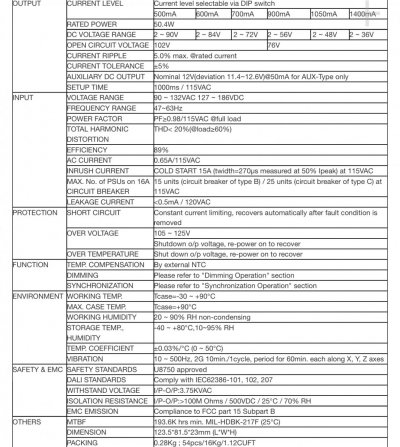Navigation
Install the app
How to install the app on iOS
Follow along with the video below to see how to install our site as a web app on your home screen.
Note: This feature may not be available in some browsers.
More options
You are using an out of date browser. It may not display this or other websites correctly.
You should upgrade or use an alternative browser.
You should upgrade or use an alternative browser.
Led Driver
- Thread starter baseballfanatic2
- Start date
- Tagged users None
I can’t answer the specific question, but I can bump the thread to see if we can get you some help
- Joined
- Apr 19, 2020
- Messages
- 158
- Reaction score
- 117
Need a little more information, such as which model led and what colors.
- Joined
- Apr 19, 2020
- Messages
- 158
- Reaction score
- 117
Basically take the drivers voltage range and divide it by the turn on voltage of the leds you want to drive. You also need to make sure the current matches the leds current. You would want to select a current that is a little lower than the max of the led.
- Joined
- Apr 19, 2020
- Messages
- 158
- Reaction score
- 117
I don’t see how that is a problem. Metal halides are 130 volts. T5s have 120 ac. Your going to have a bad day no matter what light you dunk in your tank.
Sure, MH and T5 fixtures are implicitly dangerous. But with a DIY LED device you do have the chance to decide for a less life-threatening implementation.I don’t see how that is a problem. Metal halides are 130 volts. T5s have 120 ac. Your going to have a bad day no matter what light you dunk in your tank.
- Joined
- Feb 14, 2019
- Messages
- 1,730
- Reaction score
- 2,020
Newer Cree provided they are not ambers or reds have a forward voltage of 2.85 to 3 volts. So, just divide by the total voltage capacity of the driver.
However, this is not ideal. Maxing a driver in terms of both current and forward voltage can significantly reduce its lifespan. You want some free room of about 25% in terms of not maxing the drivers current or not maxing its forward voltage.
I'm not thrilled about high voltages with DIY either. If you are soldering any irregularity with solder connections gets amplified with higher voltage. All it takes is one tiny loose solder joint and that will cause the driver to reset and potentially blow your entire string.
However, this is not ideal. Maxing a driver in terms of both current and forward voltage can significantly reduce its lifespan. You want some free room of about 25% in terms of not maxing the drivers current or not maxing its forward voltage.
I'm not thrilled about high voltages with DIY either. If you are soldering any irregularity with solder connections gets amplified with higher voltage. All it takes is one tiny loose solder joint and that will cause the driver to reset and potentially blow your entire string.
Here's a potentially more complete answer.
1) Check the specs on the LEDs you want to use. They will list a forward current and voltage (e.g. 500mA, 3.0V, etc)
2) Make sure the LEDs forward current one of the selectable currents on your driver (listed at the top).
3) Then take the 50.4W (driver's maximum output wattage) and divide it by the LED's current and then divide it again by LED's voltage. For example, if the LED is 500mA and 3.0v, the calculation would be 50.4W / 0.5A / 3.0v = 33.6 LEDs. This is the theoretical maximum.
4) Take the theoretical maximum from the above calculation and reduce it by 10% (multiply it by 0.9). Then round down, and you have the number of LEDs to use safely. In the above example, you would end up with 30 LEDs.
5) If you want to double-check your math, just take the number of LEDs, multiply by the LEDs forward current in amps and forward voltage. You should end up with about 45 Watt or less.
1) Check the specs on the LEDs you want to use. They will list a forward current and voltage (e.g. 500mA, 3.0V, etc)
2) Make sure the LEDs forward current one of the selectable currents on your driver (listed at the top).
3) Then take the 50.4W (driver's maximum output wattage) and divide it by the LED's current and then divide it again by LED's voltage. For example, if the LED is 500mA and 3.0v, the calculation would be 50.4W / 0.5A / 3.0v = 33.6 LEDs. This is the theoretical maximum.
4) Take the theoretical maximum from the above calculation and reduce it by 10% (multiply it by 0.9). Then round down, and you have the number of LEDs to use safely. In the above example, you would end up with 30 LEDs.
5) If you want to double-check your math, just take the number of LEDs, multiply by the LEDs forward current in amps and forward voltage. You should end up with about 45 Watt or less.
Last edited:
Similar threads
- Replies
- 1
- Views
- 114
New Posts
-
-
How long should i mix instant ocean salt for?
- Latest: EeyoreIsMySpiritAnimal
-
-

















